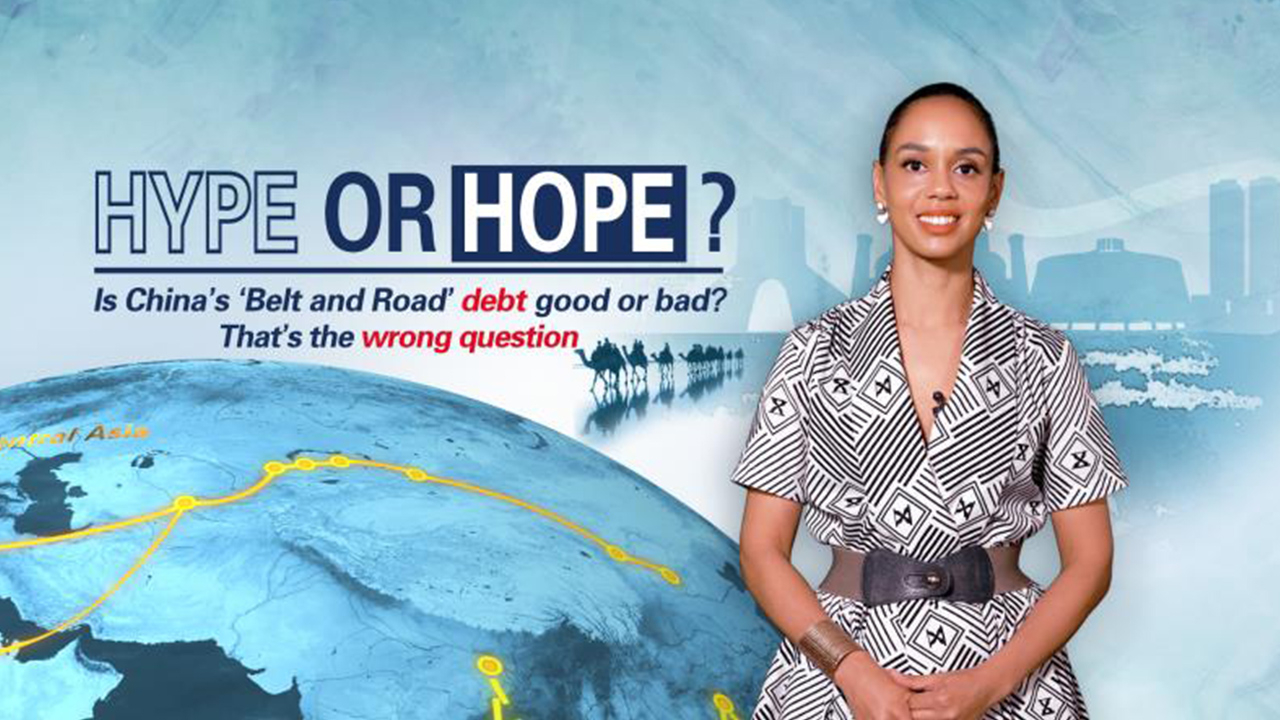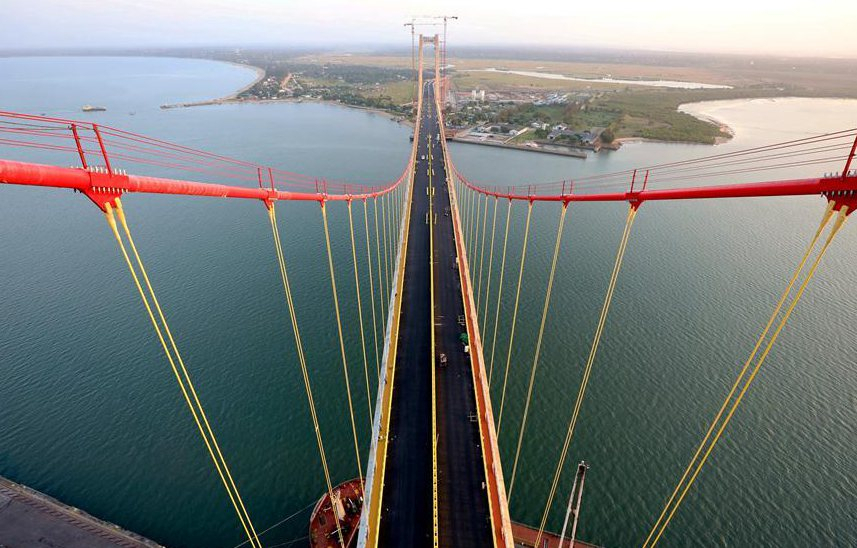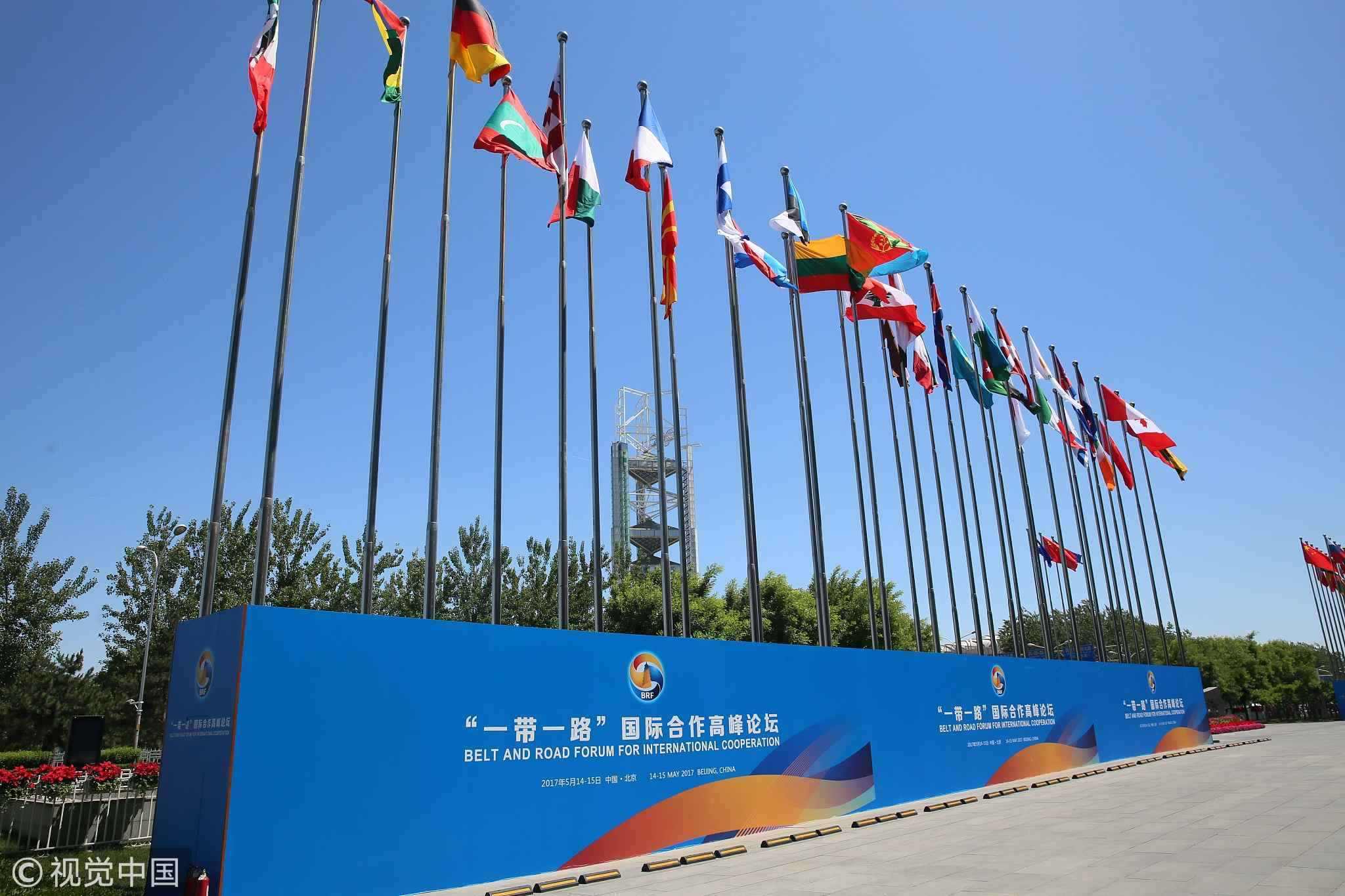
Opinion
10:29, 19-Apr-2019
Is China's 'Belt and Road' debt good or bad? That's the wrong question
Updated
23:02, 20-Apr-2019
Hannah Ryder
06:10

Editor's note: The 2nd Belt and Road Forum for International Cooperation will be held in Beijing in late April. The Belt and Road Initiative (BRI), put forward by Chinese President Xi Jinping in 2013, has attracted cheers and jeers at the same time. A total of 126 countries and 29 international organizations have signed up for the sprawling transcontinental connectivity project, despite a tireless chorus of opposing voices and a cacophony of claims about its intention and operations. CGTN is attempting to cut through the noise in a new short video series titled "Hype or Hope?" Here is the first of our five episodes to help you separate BRI facts from fiction. Hannah Ryder is CEO of Development Reimagined, an international development consultancy based in Beijing, and former head of policy and partnerships for the United Nations Development Program in China.
When I was growing up, my parents warned me about two things: Boys and debt. I grew up strongly aware that I was to avoid both, and to approach them with a lot of skepticism.
My husband, on the other hand, was told the opposite: Search hard for a great partner, and if you're investing in your home and future, stretch and raise as much debt as you can possibly manage.
Now, happily married for 11 years, still working hard, having paid off our student loans, but paying off our mortgage every month still, I guess we found a healthy and happy balance to both partnerships and debt.
But what is a healthy and happy balance to partnerships and debt for the government of an entire country like Kenya, where I was born? Should countries be cautious or should they be proactive, and stretch themselves?
Well, here is the challenge.
Africa needs a great deal of new infrastructure – from trains to power stations. But African governments are not large or rich enough to pay for this by themselves – they need external help as loans from either the private sector or other international partners to secure at least 63 billion U.S. dollars per year, according to an estimate by the African Development Bank. The continent will also face additional costs due to climate change of 20-30 billion U.S. dollars per year. Asian and Pacific countries also need more debt, their "infrastructure gap" is estimated at around 250 billion U.S. dollars per year.
Just like my family, in order to grow, they have to take on more debt.
As an economist, I should know this. It's been shown in many studies that the more that countries spend on infrastructure, the more their economies grow.

The Chinese-built Maputo Bridge in Maputo, Mozambique, May 10, 2018. /Xinhua Photo
The Chinese-built Maputo Bridge in Maputo, Mozambique, May 10, 2018. /Xinhua Photo
As a result, it's not the amount of debt that matters; it's the type of debt that matters. In particular, is the debt going into projects that will be productive in the future?
That's why the Kenyan president, in a recent interview with CNN said, "What would worry me is if the debt was going into… paying salaries, or electricity bills, and so on. But what we have used our debt for is to close the infrastructure gap."
The good news is there is no shortage of productive infrastructure projects for China or others to invest in. In African countries, where over 600 million people don't have access to energy, renewable energy projects will enable young people to read and do their homework with light, enable factories to run better, without creating air pollution and climate change effects.
In Asia, green inner and inter-city transport is a great investment – enabling more people to move around to seek jobs. In Latin America and the Caribbean, investment in tourism and transport will also deliver decent returns.
Are these productive investments being prioritized by China and others? Not necessarily, for three reasons.
A lack of transparency can be the first reason. Governments should be conducting more due diligence of companies and companies themselves be more open. For instance, some companies – including from China – are still used for projects despite being on World Bank blacklists for corrupt practices. These blacklists may have shortcomings, but there are also opportunities for better performing companies to be chosen.
The second reason is "tying." This is a policy used by many countries – including America, Japan and China – of requiring that loans or aid they give to other countries should go to a project that is built by their own companies. This type of securing "win-win" can be helpful to ensuring projects get done quickly and even avoid corruption. But tying can also create massive conflicts of interest, shifting the focus away from the poor people that the finance is meant to help. However, many countries – including the U.S. and Japan – are reluctant to stop tying.

The first Belt and Road Forum for International Cooperation was held in Beijing in May 2017. /VCG Photo
The first Belt and Road Forum for International Cooperation was held in Beijing in May 2017. /VCG Photo
That said, through its most recent Foreign Investment Law, China has made a landmark move by opening up domestic government procurement to foreign firms. Hopefully this principle will also be applied to projects supported by China abroad and thereby "untie" them.
The third and final reason why the most productive projects may not be picked is the lack of leadership. Governments need to work much harder to prioritize the most sustainable and green projects that their citizens need and in a manner they want – including using local companies, local materials and local labor.
As the final touches are being put on the 2nd Belt and Road Forum for International Cooperation, my hope is that the discussion about debt in poor countries will be less about debt from China or the amount, but more about better debt from everyone. Indeed, China's offer of 100 billion U.S. dollars a year is less than 10 percent of the total infrastructure gap for poor countries around the world. Poor countries will still have to look beyond China.
With the BRI, and new global funds like the Asian Infrastructure Investment Bank, America's new infrastructure fund called BUILD, and a new infrastructure facility for the Pacific from Australia, there is a great opportunity ahead for everyone.
Let's not be as cautious as my parents told me to be. The world will not be able to meet the UN's Sustainable Development Goals unless poor countries get more cheap loans. But like the loans that my husband and I took out to fund our future, let's work hard to make sure the debt is productive as quickly as possible.
Editing & design: Zhao Yuanzhen and Wang Xinyan
Videographer: Zhou Jinxi
Animation: Li Xingguang and Zhou Kai
Video editors: Chen Hangyu, Zhang Qingxiao and Sheng Jie
Producer: Bi Jianlu
Supervisor: Mei Yan
(If you want to contribute and have specific expertise, please contact us at opinions@cgtn.com)

SITEMAP
Copyright © 2018 CGTN. Beijing ICP prepared NO.16065310-3
Copyright © 2018 CGTN. Beijing ICP prepared NO.16065310-3